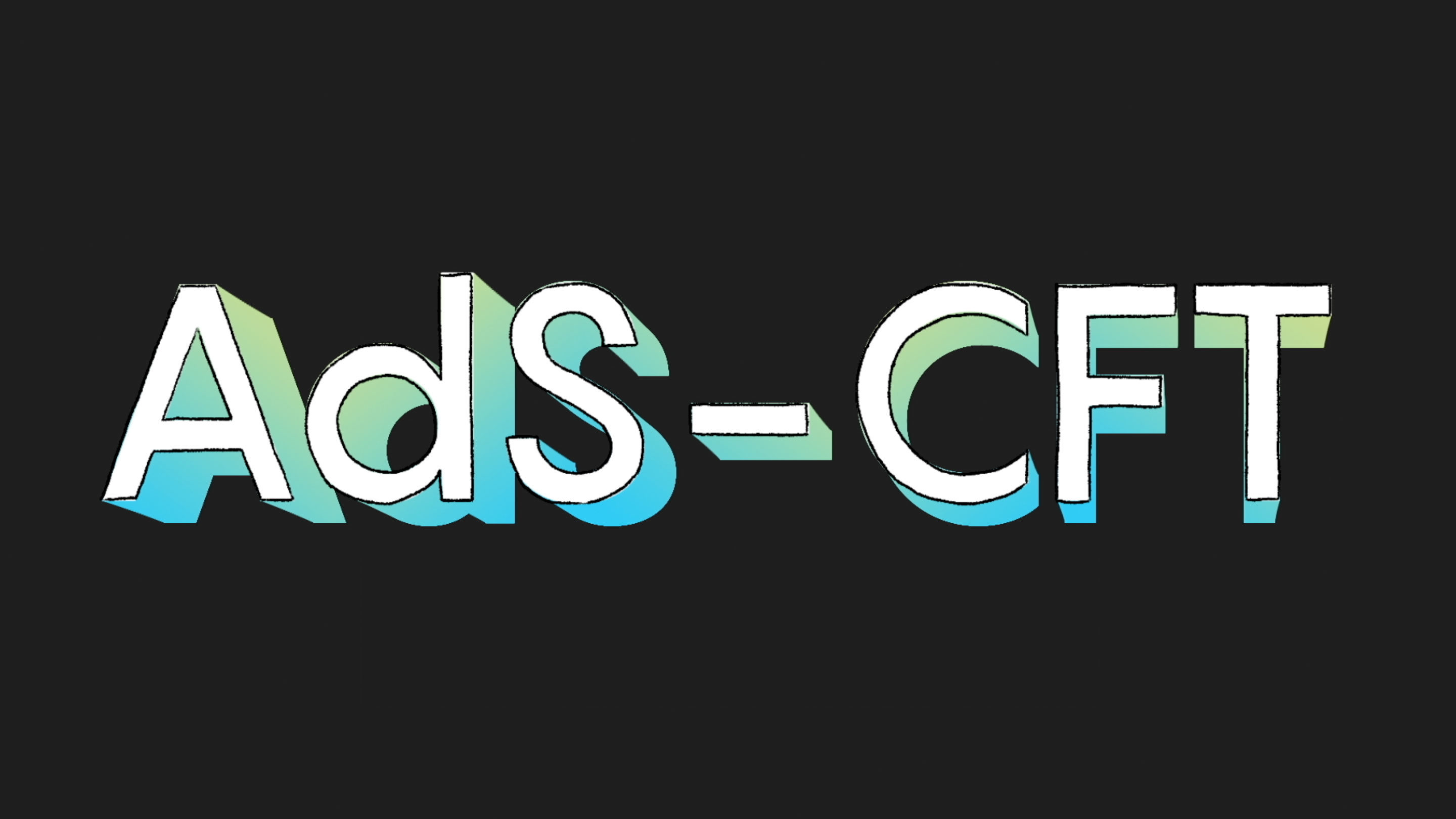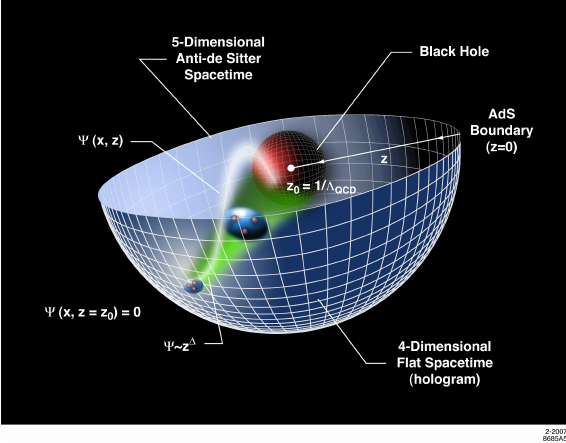
The anti-de Sitter/conformal field theory (AdS/CFT) correspondence or gauge/gravity duality, is a remarkable conjectured equivalence between two theories. The first theory is quantum gravity on asymptotically anti-de Sitter spacetimes (AdS) formulated in terms of higher spin theories, string theory or M-theory. The second theory involved in the correspondence are conformal field theories (CFT) which are quantum field theories that enjoy conformal symmetry. These are non-gravitational theories and include theories that are very similar to the Yang–Mills theories that describe elementary particles. The gravitational theories live in a spacetime with one more dimension than the non-gravitational theories.
The AdS/CFT correspondence is a concrete realization of the holographic principle, put forward by 't Hooft and given a string-theory interpretation by Susskind. The principle is a statement about quantum gravity and it claims that the quantum gravity dynamics in a volume of space time can be encoded by a lower-dimensional non-gravitational theory living on the boundary of the region. The holographic principle was inspired by black hole thermodynamics, which conjectures that the maximal entropy in any region scales with the area bounding the region, and not as the volume of the region as might be expected.

The AdS/CFT correspondence is a major advance in our understanding of string theory and quantum gravity. Indeed, through it conformal field theory provides a non-perturbative formulation of string theory with certain boundary conditions. It has already shed significant light on some of the most challenging questions in quantum gravity, including the information loss paradox. On the other hand, it also provides a powerful new approach for studying strongly coupled quantum field theories. Indeed, much of the power of the duality is rooted in the fact that it is a strong-weak duality: when the fields of the quantum field theory are strongly interacting, the fields of the dual gravitational theory are weakly interacting and vice versa. This fact has been used to explore aspects of nuclear and condensed matter physics by translating these problems into more tractable problems in string theory.
The AdS/CFT correspondence was proposed by Maldacena in late 1997. Important features of the correspondence were clarified in articles by Gubser, Klebanov and Polyakov, and also by Witten, shortly after the correspondence was proposed. It is one of the most active areas in High Energy Theoretical Physics today.